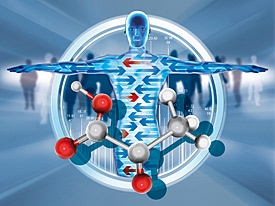Cognitive and Memory Enhancer Drugs: Role in Treating Cognitive Disorders
Cognitive and memory enhancer drugs, often referred to as nootropics or smart drugs, are substances that aim to improve mental functions such as memory, creativity, focus, and overall cognitive performance. These drugs have garnered significant attention in recent years due to their potential benefits for individuals ranging from students and professionals to the elderly and those with cognitive impairments.
Types of Cognitive and Memory Enhancer Drugs
There are various types of Cognitive and Memory Enhancer Drugs , broadly categorized into natural and synthetic options. Natural nootropics include substances like Ginkgo Biloba, Bacopa Monnieri, and Rhodiola Rosea, which have been used for centuries in traditional medicine. These natural enhancers are believed to improve cognitive functions by increasing blood flow to the brain, reducing oxidative stress, and enhancing neurotransmitter activity.
On the other hand, synthetic nootropics include drugs like Modafinil, Adderall, and Piracetam. Modafinil, for instance, is commonly prescribed for narcolepsy but is also used off-label to enhance focus and alertness. Adderall, a combination of amphetamine salts, is primarily used to treat Attention Deficit Hyperactivity Disorder (ADHD) but is also known for its cognitive-enhancing effects. Piracetam, one of the earliest synthetic nootropics, is believed to enhance memory and learning by modulating neurotransmitter systems.
Mechanisms of Action
The mechanisms through which cognitive enhancers work vary widely. Cognitive and Memory Enhancer Drugs increase the availability of neurotransmitters like dopamine, norepinephrine, and acetylcholine, which play crucial roles in attention, motivation, and memory. Others may enhance neuroplasticity, the brain’s ability to form and reorganize synaptic connections, especially in response to learning or experience.
For example, Modafinil is thought to work by increasing the levels of dopamine in the brain, thereby enhancing wakefulness and cognitive function. Similarly, natural nootropics like Bacopa Monnieri are believed to exert their effects by modulating the cholinergic system, which is involved in memory and learning processes.
Benefits and Risks
The potential benefits of cognitive and memory enhancer drugs are substantial. For students and professionals, these drugs can offer improved focus, better memory retention, and enhanced problem-solving abilities. For the elderly and those with cognitive impairments, nootropics can help mitigate the effects of aging and neurodegenerative diseases like Alzheimer’s.
However, the use of cognitive enhancers is not without risks. Side effects can range from mild, such as headaches and nausea, to severe, including addiction and cardiovascular issues. The long-term effects of many synthetic nootropics are still not well understood, raising concerns about their safety and efficacy over extended periods.
Ethical and Legal Considerations
The use of cognitive enhancers also raises ethical and legal questions. In academic and professional settings, the use of these drugs can create an uneven playing field, leading to debates about fairness and the potential for coercion. Additionally, while some nootropics are available over the counter, others require a prescription, and their off-label use can be legally ambiguous.
Conclusion
Cognitive and memory enhancer drugs offer promising benefits for improving mental performance and mitigating cognitive decline. However, their use should be approached with caution, considering the potential risks and ethical implications. As research continues to evolve, it is crucial to balance the pursuit of cognitive enhancement with the principles of safety, fairness, and informed decision-making.
Cognitive and Memory Enhancer Drugs: Role in Treating Cognitive Disorders
Cognitive and memory enhancer drugs, often referred to as nootropics or smart drugs, are substances that aim to improve mental functions such as memory, creativity, focus, and overall cognitive performance. These drugs have garnered significant attention in recent years due to their potential benefits for individuals ranging from students and professionals to the elderly and those with cognitive impairments.
Types of Cognitive and Memory Enhancer Drugs
There are various types of Cognitive and Memory Enhancer Drugs , broadly categorized into natural and synthetic options. Natural nootropics include substances like Ginkgo Biloba, Bacopa Monnieri, and Rhodiola Rosea, which have been used for centuries in traditional medicine. These natural enhancers are believed to improve cognitive functions by increasing blood flow to the brain, reducing oxidative stress, and enhancing neurotransmitter activity.
On the other hand, synthetic nootropics include drugs like Modafinil, Adderall, and Piracetam. Modafinil, for instance, is commonly prescribed for narcolepsy but is also used off-label to enhance focus and alertness. Adderall, a combination of amphetamine salts, is primarily used to treat Attention Deficit Hyperactivity Disorder (ADHD) but is also known for its cognitive-enhancing effects. Piracetam, one of the earliest synthetic nootropics, is believed to enhance memory and learning by modulating neurotransmitter systems.
Mechanisms of Action
The mechanisms through which cognitive enhancers work vary widely. Cognitive and Memory Enhancer Drugs increase the availability of neurotransmitters like dopamine, norepinephrine, and acetylcholine, which play crucial roles in attention, motivation, and memory. Others may enhance neuroplasticity, the brain’s ability to form and reorganize synaptic connections, especially in response to learning or experience.
For example, Modafinil is thought to work by increasing the levels of dopamine in the brain, thereby enhancing wakefulness and cognitive function. Similarly, natural nootropics like Bacopa Monnieri are believed to exert their effects by modulating the cholinergic system, which is involved in memory and learning processes.
Benefits and Risks
The potential benefits of cognitive and memory enhancer drugs are substantial. For students and professionals, these drugs can offer improved focus, better memory retention, and enhanced problem-solving abilities. For the elderly and those with cognitive impairments, nootropics can help mitigate the effects of aging and neurodegenerative diseases like Alzheimer’s.
However, the use of cognitive enhancers is not without risks. Side effects can range from mild, such as headaches and nausea, to severe, including addiction and cardiovascular issues. The long-term effects of many synthetic nootropics are still not well understood, raising concerns about their safety and efficacy over extended periods.
Ethical and Legal Considerations
The use of cognitive enhancers also raises ethical and legal questions. In academic and professional settings, the use of these drugs can create an uneven playing field, leading to debates about fairness and the potential for coercion. Additionally, while some nootropics are available over the counter, others require a prescription, and their off-label use can be legally ambiguous.
Conclusion
Cognitive and memory enhancer drugs offer promising benefits for improving mental performance and mitigating cognitive decline. However, their use should be approached with caution, considering the potential risks and ethical implications. As research continues to evolve, it is crucial to balance the pursuit of cognitive enhancement with the principles of safety, fairness, and informed decision-making.





